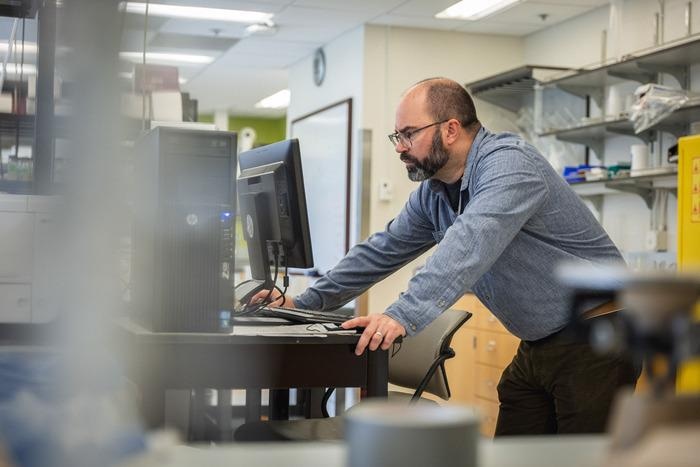As drug-resistant and emerging pathogens become a more severe global health hazard, demand for novel types of antibiotics is rising. Researchers are rushing to review a group of bacteria known as actinomycetes, which are one of the most successful sources of treatment.
 Joshua Blodgett, Assistant Professor of Biology, Washington University in St. Louis. Image Credit: Sean Garcia, Washington University.
Joshua Blodgett, Assistant Professor of Biology, Washington University in St. Louis. Image Credit: Sean Garcia, Washington University.
Scientists from Washington University in St. Louis and the University of Hawaii uncovered a possible drug candidate from one of these microbes, Lentzea flaviverrucosa, a soil bacterium. Scientists published their findings in the Proceedings of the National Academy of Sciences the week of April 11th.
Rare actinomycetes are an underexploited source of new bioactive compounds. Our genomics-based approach allowed us to identify an unusual peptide for future drug design efforts.”
Joshua Blodgett, Study Co-Corresponding Author and Assistant Professor, Biology in Arts & Sciences, Washington University in St. Louis
Bioactive components produced by actinomycetes provide the foundation for many therapeutically effective drugs, including antibiotics and anticancer treatments. Pharmaceutical firms have studied numerous common actinomycetes since the 1940s to see what they may create. Actinomycetes are responsible for nearly two-thirds of all antibiotics used in hospitals and clinics today.
However, some of these bacteria, known as rare actinomycetes, have been identified but not thoroughly investigated.
The term “rare” is not defined in stone, although these actinomycetes are more difficult to discover in nature than others and develop more slowly, according to Blodgett. Many rare actinomycetes have not been adequately described for drug research and biotechnology objectives for these and other reasons.
Lentzea flaviverrucosa stood out among the unusual actinomycetes, according to Blodgett.
It has unusual biology, encoding for unusual enzymology, driving the production of unexpected chemistry, all harbored within a largely overlooked group of bacteria.”
Joshua Blodgett, Study Co-Corresponding Author and Assistant Professor, Biology in Arts & Sciences, Washington University in St. Louis
Blodgett and his colleagues discovered that this rare actinomycete generates compounds that are active against some forms of human ovarian cancer, fibrosarcoma, prostate cancer, and leukemia cell lines, including co-corresponding author Shugeng Cao of the University of Hawaii.
When the researchers were seeking rare actinomycetes with a genetic signature indicating that they can manufacture piperazyl molecules, researchers came upon Lentzea flaviverrucosa. Blodgett explained that these compounds include a unique building component that acts as a warning sign for possible drug-like properties.
However, the scientists found a few more surprises when researchers probed further.
At a high level, it looked as if one region of the genome might be able to make two different molecules. That’s just a little strange. Usually we think of a gene cluster, groups of genes that are like blueprints for making individual drug-like molecules. But it looked like there was almost too much chemistry predicted within this single cluster.”
Joshua Blodgett, Study Co-Corresponding Author and Assistant Professor, Biology in Arts & Sciences, Washington University in St. Louis
The early indications were correct. Blodgett and colleagues demonstrated that this rare actinomycete manufactures two separate bioactive compounds from a single set of genes named a supercluster by combining advanced metabolomics with chemical and structural biology approaches.
In biology, superclusters are rare. This type of supercluster represents two distinct molecules that are subsequently fused in a unique chemical reaction.
“Nature is welding two different things together. And, as it turns out, against several different cancer cell lines, when you stick A and B together, it turns into something more potent,” Blodgett concluded.